Nestled in the heart of the Himalayas, the Langtang Valley is a trekker’s paradise, offering a blend of natural beauty, cultural richness, and a true sense of adventure.
Located just north of Kathmandu, this region is less crowded than the more famous Everest and Annapurna regions, and less arduous than Kilimanjaro further afield, making it an ideal destination for those seeking a more serene trekking experience.
However, before you lace up your boots and set off on this unforgettable journey, there are things you need to know. Some might prevent you from twisting your ankle, so may even save your life…
Understanding The Langtang Valley
Geography & Climate
The Langtang Valley lies within the Langtang National Park, which spans an area of 1,710 square kilometres. The valley is flanked by the Langtang Lirung (7,227 metres) to the north and the Langtang Ri (7,205 metres) to the east. The region is characterised by its diverse landscapes, ranging from lush forests and terraced fields to alpine meadows and towering peaks.
The best time to trek the Langtang Valley is during the pre-monsoon (March to May) and post-monsoon (September to November) seasons. During these periods, the weather is relatively stable, and the skies are clear, offering stunning views of the mountains. However, be prepared for cold nights, especially at higher altitudes.
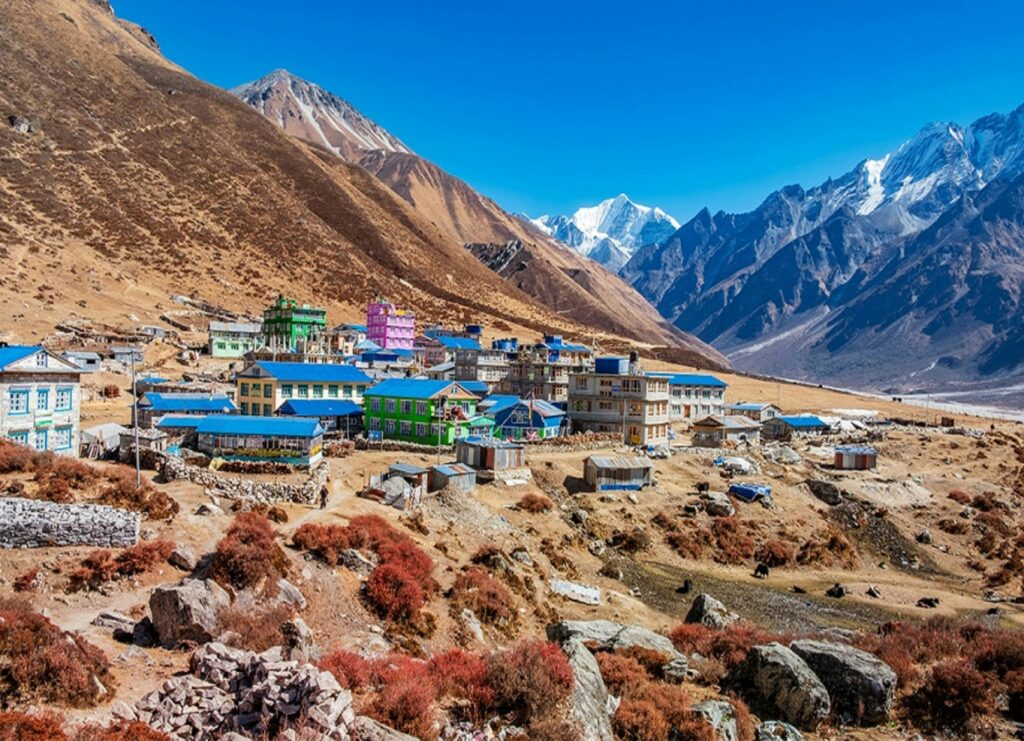
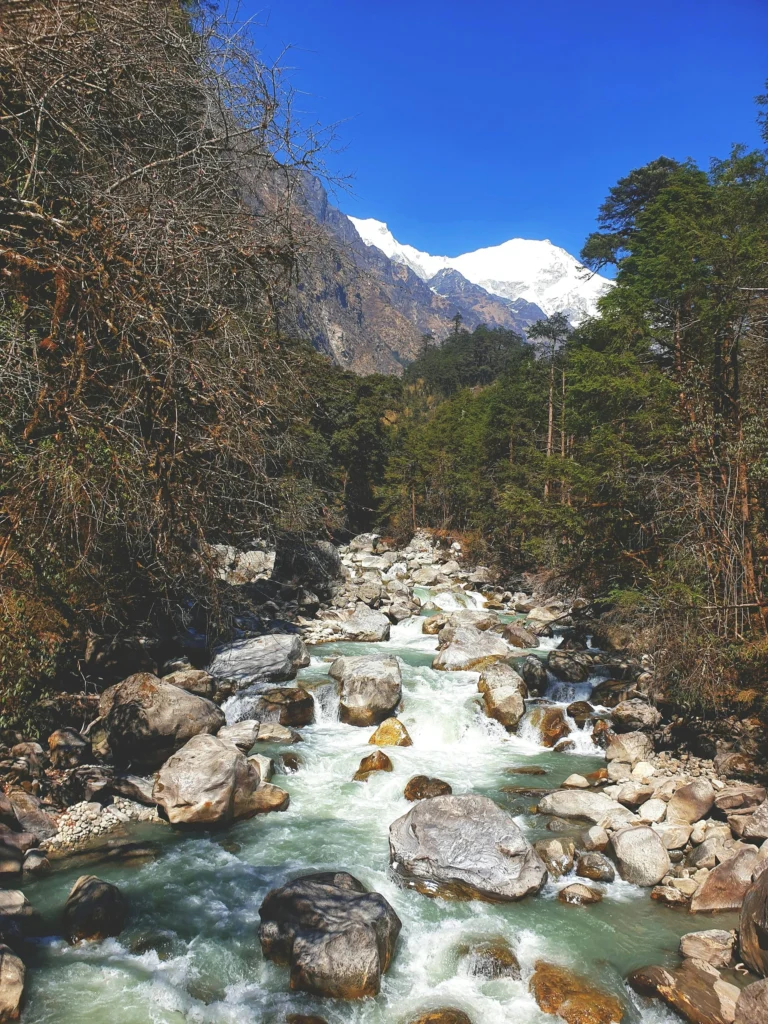

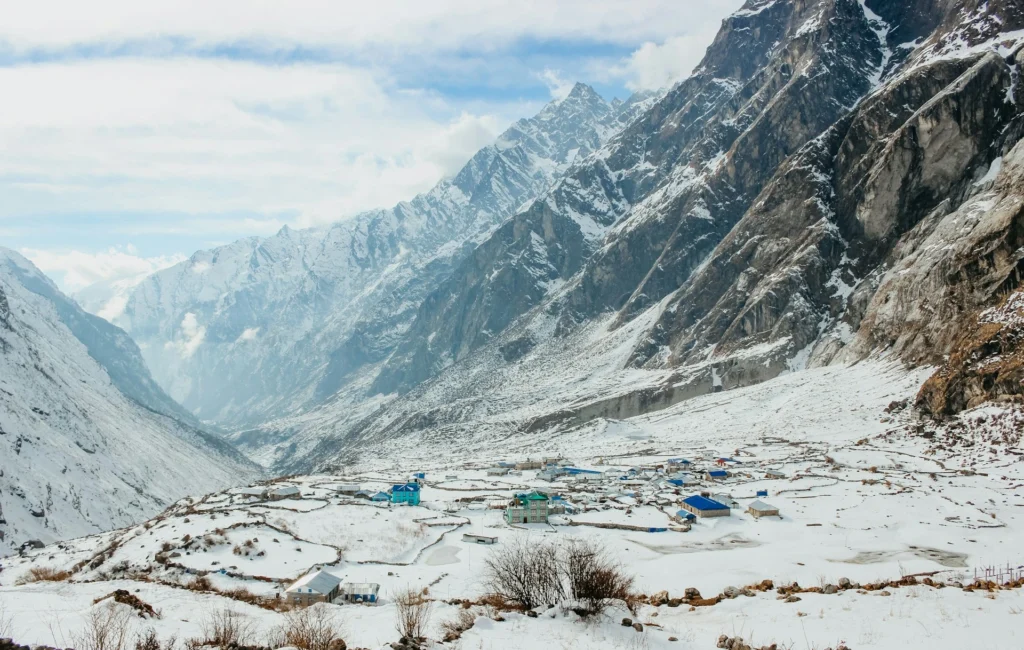
Cultural Insights
The Langtang Valley is home to the Tamang and Sherpa communities, who have preserved their unique cultures and traditions over centuries. As you trek through the valley, you will encounter ancient monasteries, prayer wheels, and chortens (Buddhist shrines). The village of Kyanjin Gompa, in particular, is a cultural highlight, with its ancient monastery and cheese factory.
Essential Preparations
Permits & Regulations
To trek in the Langtang Valley, you will need two permits:
- Langtang National Park Entry Permit: This can be obtained from the Nepal Tourism Board office in Kathmandu or at the park entrance in Dhunche.
- A Trekkers’ Information Management System (TIMS) Card: This is mandatory for all trekkers in Nepal and can be acquired from the Nepal Tourism Board office or through a registered trekking agency.
Ensure you carry these permits with you at all times, as there are several checkpoints along the trail.
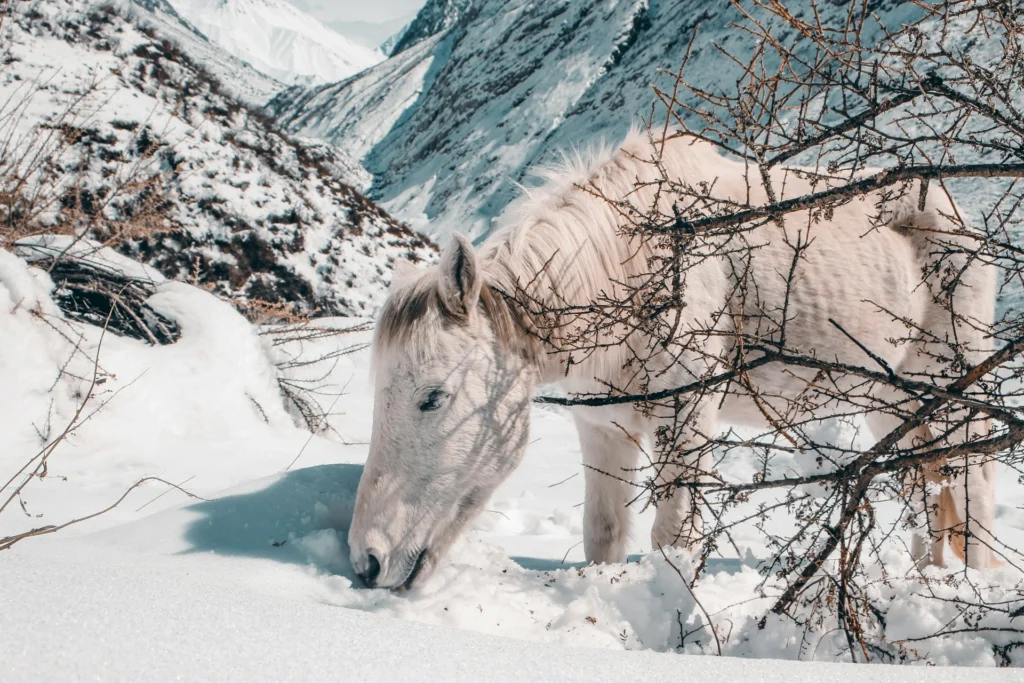
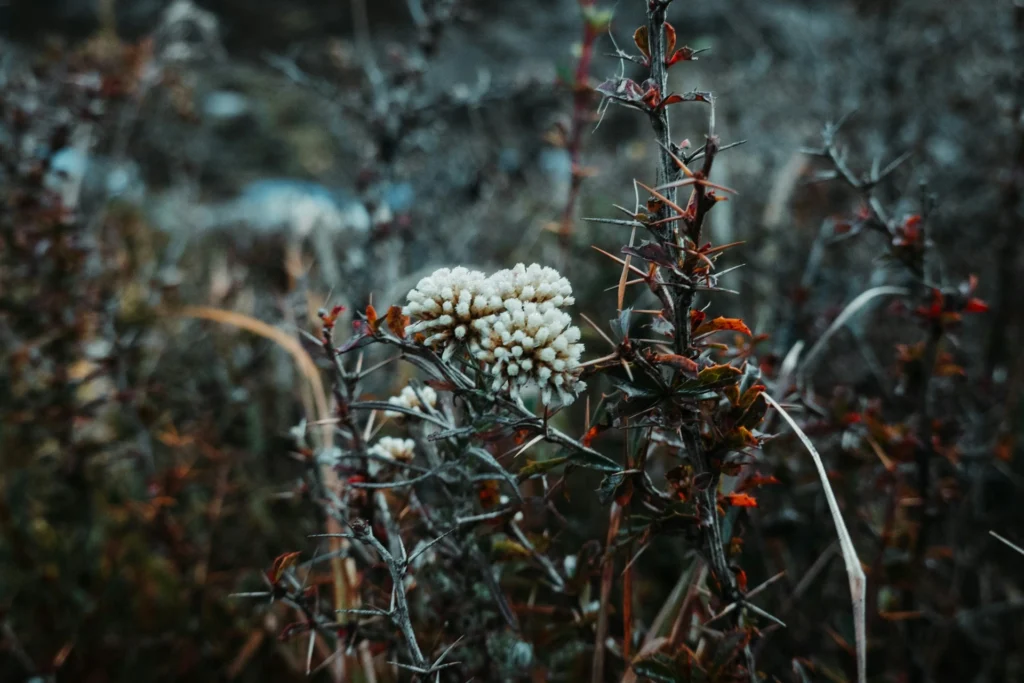
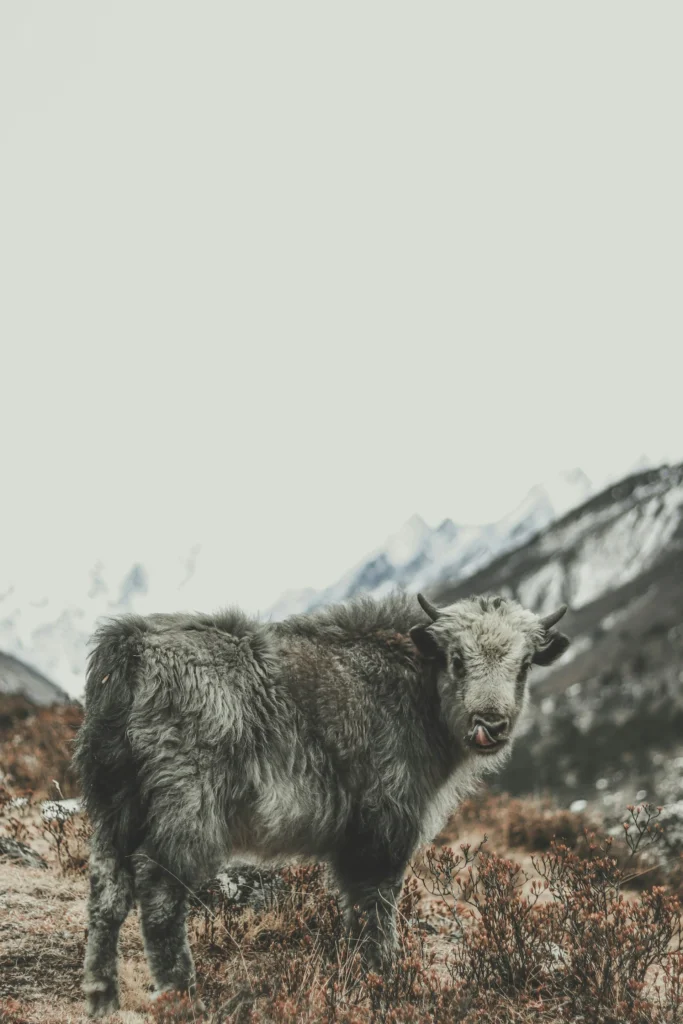

Physical Fitness & Acclimatisation
The Langtang Valley trek is considered moderately challenging, with daily walks ranging from 5 to 7 hours. While you don’t need to be an elite athlete, a reasonable level of fitness is essential. Engage in regular cardiovascular and strength training exercises in the months leading up to your trek.
Acclimatisation is crucial to prevent altitude sickness. The highest point on the trek is Tserko Ri (4,984 metres), and it’s important to ascend gradually. Spend an extra day at Kyanjin Gompa to acclimatise and explore the surrounding areas.
Packing Essentials
Packing the right gear can make or break your trekking experience. Here’s a checklist of essential items:
- Clothing: Layering is key. Pack moisture-wicking base layers, insulating mid-layers, and a waterproof outer layer. Don’t forget a warm hat, gloves, and thermal socks.
- Footwear: Invest in a good pair of trekking boots with ankle support. Break them in before your trek to avoid blisters.
- Sleeping Gear: While teahouses provide basic accommodation, a good quality sleeping bag rated for -10°C is recommended.
- Miscellaneous: A sturdy backpack, trekking poles, a headlamp, a water purification system, and a first aid kit are essential. Also, carry some high-energy snacks like nuts and chocolate.

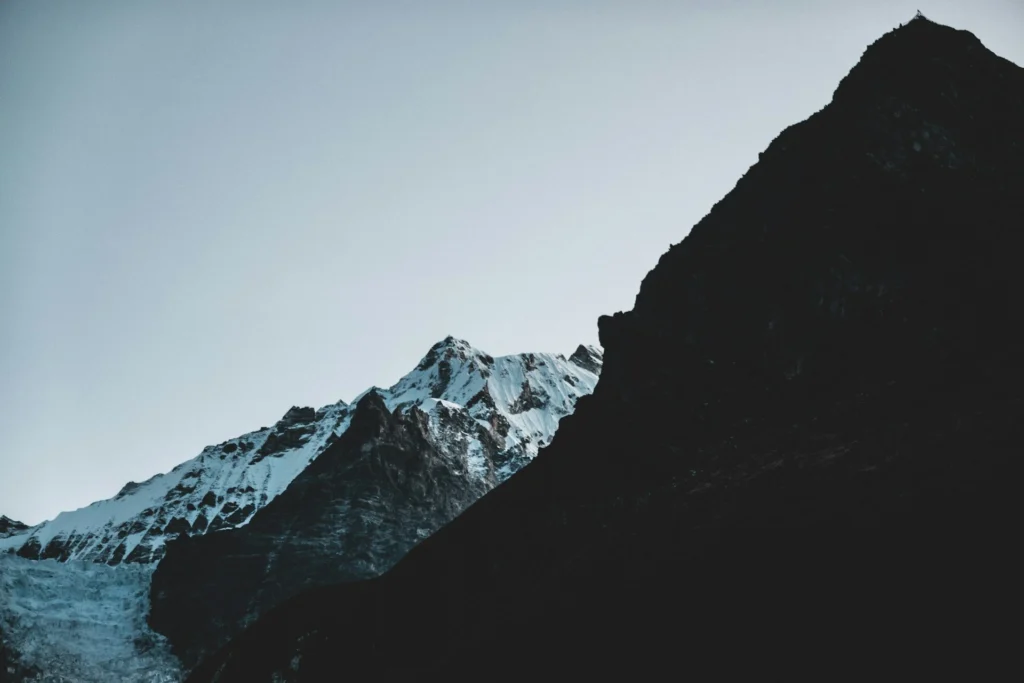
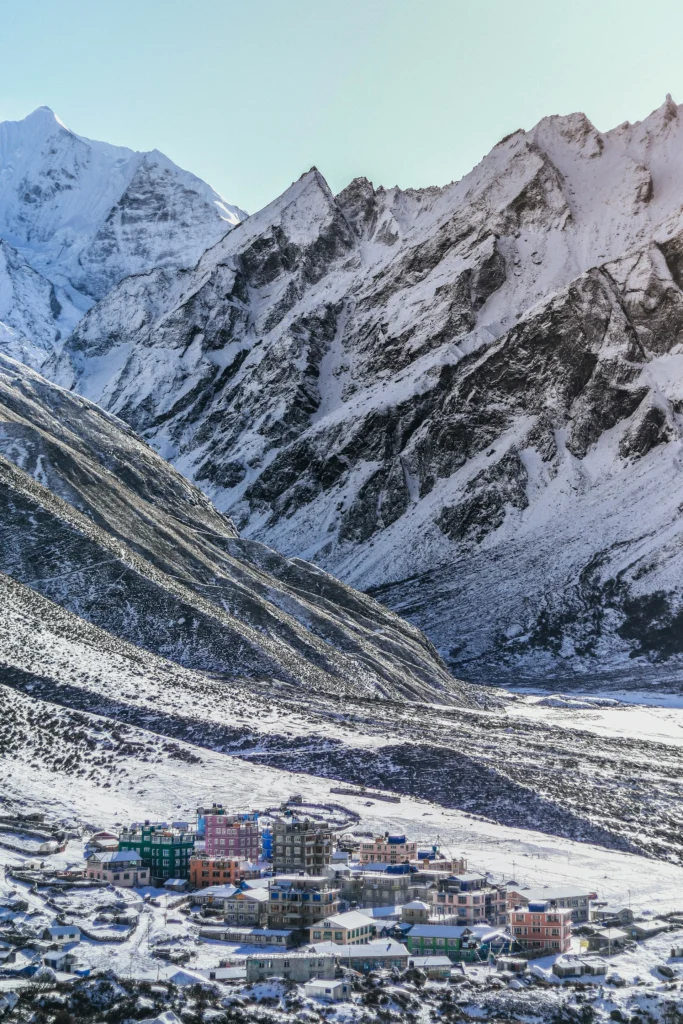
Trekking Routes & Duration
Standard Langtang Valley Trek
The standard Langtang Valley trek typically takes around 7 to 10 days, depending on your pace and acclimatisation needs. Here’s a sample itinerary:
- Day 1: Kathmandu to Syabrubesi (1,550 metres) – A 7-8 hour drive from Kathmandu.
- Day 2: Syabrubesi to Lama Hotel (2,380 metres) – 6-7 hours of trekking through lush forests.
- Day 3: Lama Hotel to Langtang Village (3,430 metres) – 6-7 hours, passing through Ghodatabela and witnessing the devastation and rebuilding efforts post-2015 earthquake.
- Day 4: Langtang Village to Kyanjin Gompa (3,870 metres) – 3-4 hours, a shorter day to aid acclimatisation.
- Day 5: Acclimatisation Day at Kyanjin Gompa – Explore the area, hike to Tserko Ri (4,984 metres) for panoramic views.
- Day 6: Kyanjin Gompa to Lama Hotel – 6-7 hours, retracing your steps.
- Day 7: Lama Hotel to Syabrubesi – 5-6 hours.
- Day 8: Syabrubesi to Kathmandu – Drive back to Kathmandu.
Extended Routes
For those with more time and seeking additional adventure, consider these extended routes:
- Gosaikunda and Helambu Trek: This route extends the Langtang Valley trek by an additional 5-7 days, taking you to the sacred Gosaikunda Lake and through the Helambu region. It offers a mix of high-altitude lakes, diverse landscapes, and cultural experiences.
- Tamang Heritage Trail: This can be combined with the Langtang Valley trek, adding 4-5 days. It takes you through traditional Tamang villages, offering deeper cultural insights and less-trodden paths.
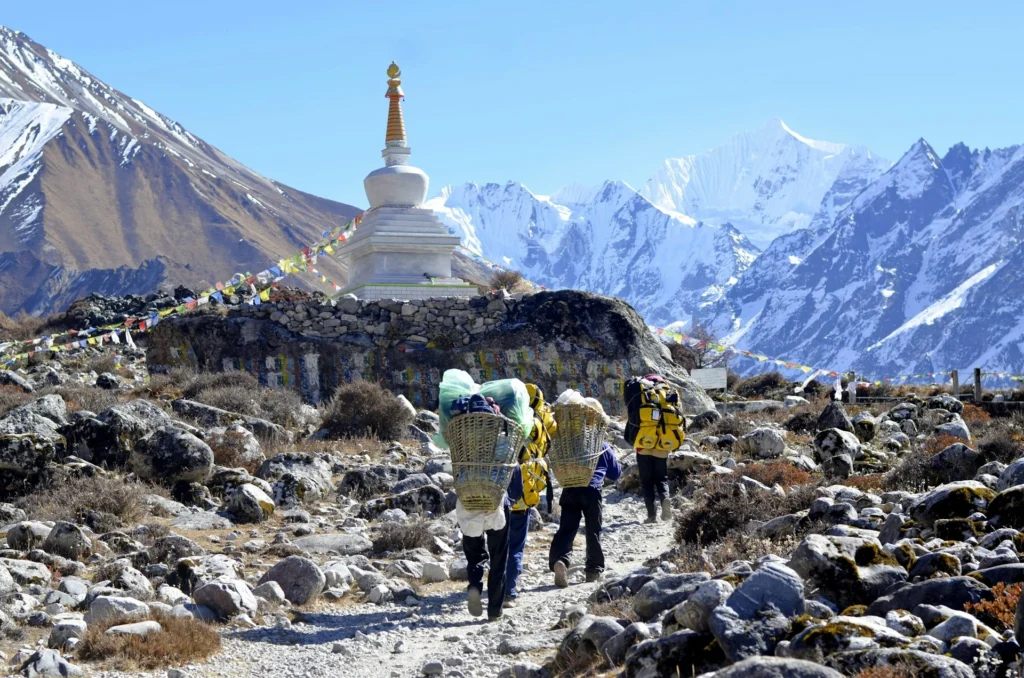
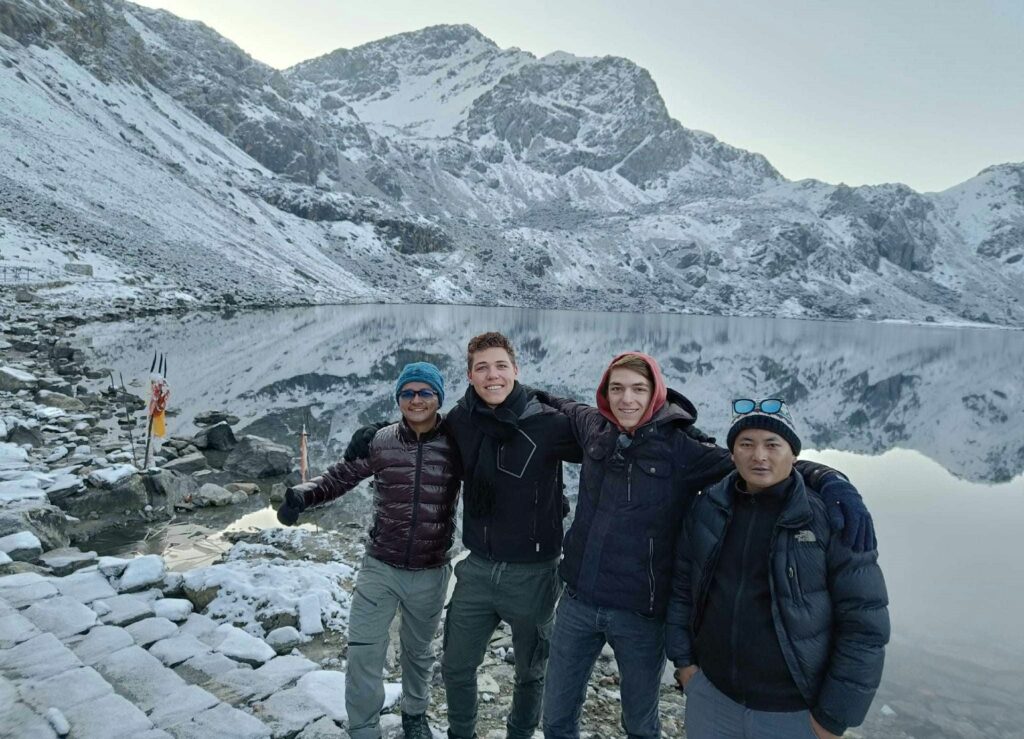
On The Trail
Accommodation & Food
Accommodation in the Langtang Valley is primarily in teahouses, which offer basic but comfortable lodging. Rooms are usually twin-sharing with shared bathrooms. The teahouses also provide meals, with menus typically featuring Nepali staples like dal bhat (lentil soup with rice), momo (dumplings), and Tibetan bread. While the food is hearty and filling, it’s advisable to carry some supplementary snacks.
Connectivity & Safety
Mobile network coverage is sporadic in the Langtang Valley, with some connectivity in larger villages like Syabrubesi and Kyanjin Gompa. It’s a good idea to inform someone about your trekking itinerary and expected return date.
Safety is paramount. Always trek with a partner or in a group, and hire a local guide if possible. They are invaluable for navigating the trails, understanding local customs, and ensuring your safety.
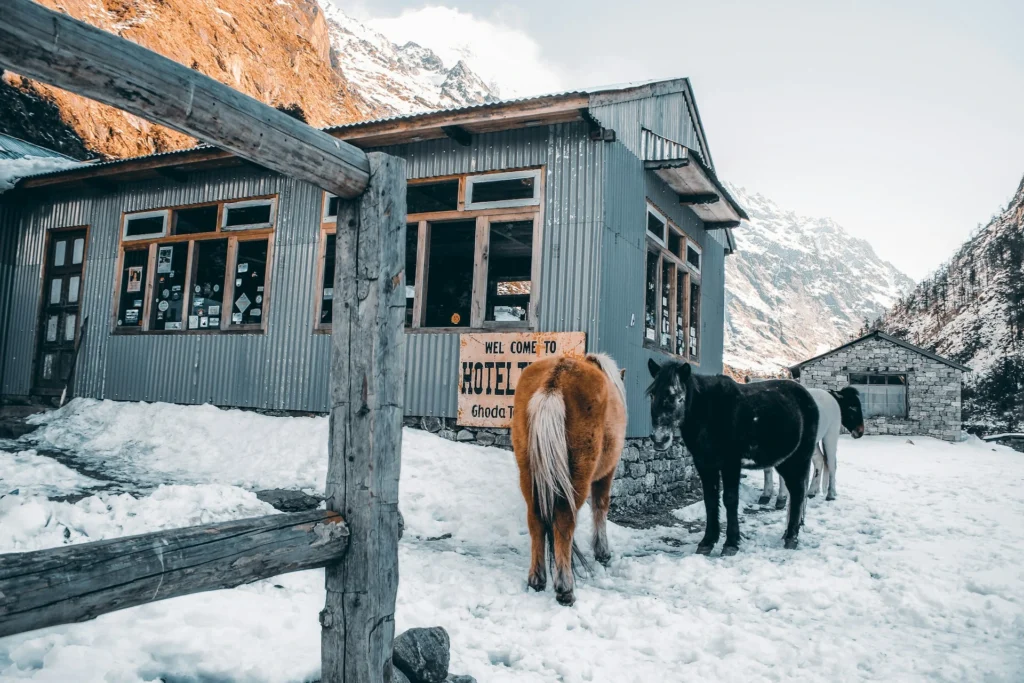
Environmental Responsibility
The Langtang Valley is a pristine environment, and it’s our responsibility to keep it that way. Follow the principles of Leave No Trace: carry out all your rubbish, avoid using single-use plastics, and respect local wildlife and flora. Support local communities by purchasing goods and services from them.
The Bottom Line
Trekking the Langtang Valley is the journey of a lifetime, offering a perfect blend of natural beauty, cultural immersion, and physical challenge. We’ll see you at the peak of Tserko Ri for a chiya?





